The 10 Most Poisonous Animals Around The World
In the depths of nature's vast tapestry, beauty and danger often intertwine, creating creatures that captivate and intimidate in equal measure. These organisms, while breathtakingly beautiful, possess lethal qualities that can be fatal to those who cross their path. The paradox of their existence lies in their ability to mesmerize with vibrant colors, intricate patterns, and graceful movements, while simultaneously harboring potent toxins. From the vibrant reefs of the Pacific Ocean to the dense jungles of South America, these creatures exemplify the duality of nature, where beauty can be as deadly as it is captivating. The concept of 'lethal beauty' is not merely a poetic notion but a survival strategy honed over millennia. These 10 animals have evolved to use their toxic traits as defense mechanisms, hunting tools, or deterrents against predators. As we delve into the lives of these fascinating creatures, we uncover stories of adaptation, survival, and the intricate dance of life and death in the animal kingdom.
1. The Radiant Venom: Poison Dart Frogs

In the lush rainforests of Central and South America, the poison dart frogs stand as a testament to nature's artistry and lethal ingenuity. These diminutive amphibians, often no larger than a paperclip, boast a kaleidoscope of colors—ranging from electric blues to fiery reds. Their vibrant hues serve as a warning to potential predators of the potent toxins they carry. These toxins, known as batrachotoxins, are among the most powerful natural poisons, capable of causing paralysis and even death in small doses. The poison dart frog's toxicity is an evolutionary marvel. Unlike many other poisonous creatures, these frogs do not produce their toxins. Instead, they derive them from their diet, consuming ants, mites, and other small arthropods that contain toxic alkaloids. This unique relationship between diet and defense highlights the intricate connections within ecosystems and the delicate balance that sustains them. Indigenous tribes have long recognized the power of these frogs, using their toxins to tip blow darts for hunting, a practice that underscores the symbiotic relationship between humans and the natural world.
2. The Silent Assassin: Box Jellyfish
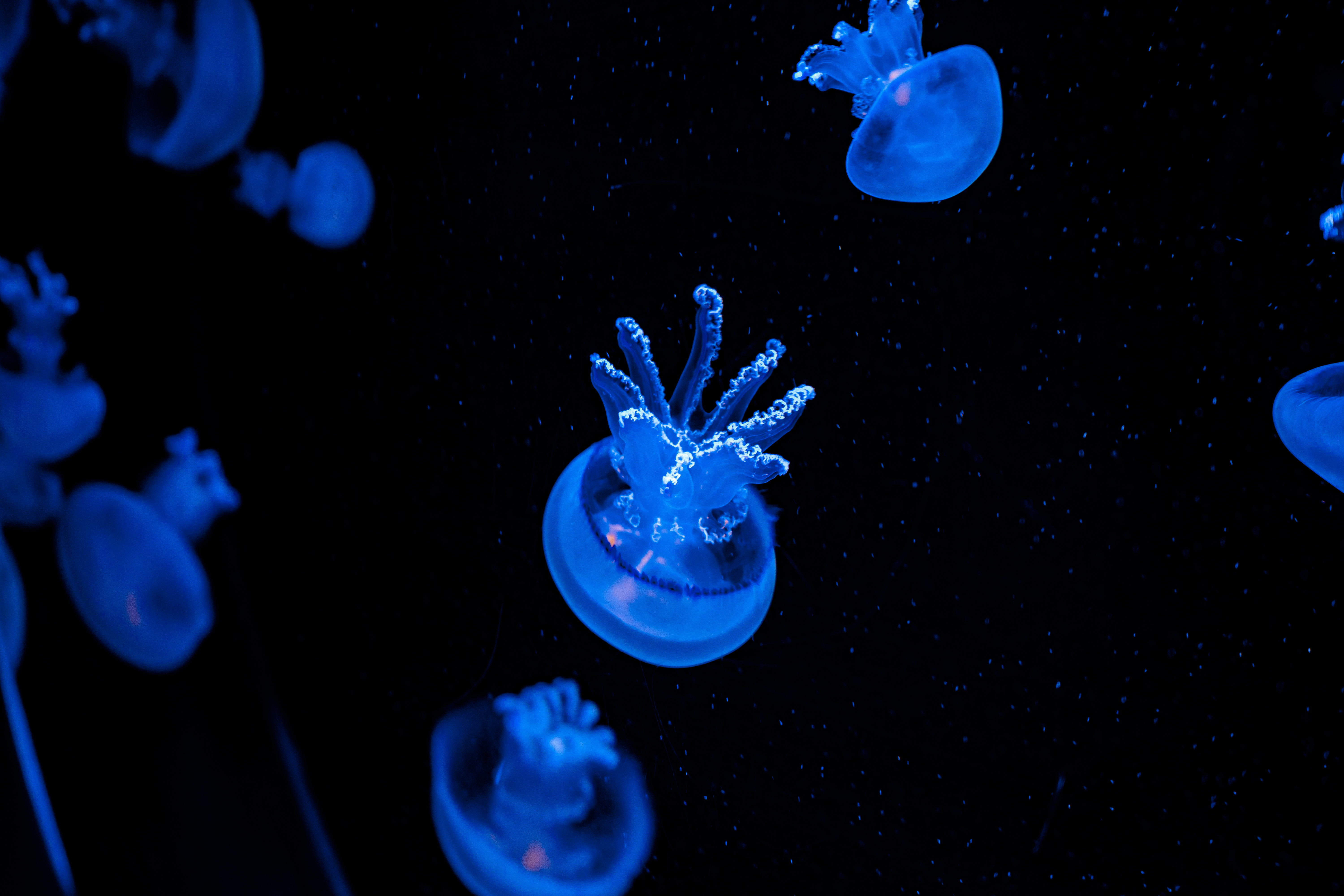
Drifting silently through the warm coastal waters of the Indo-Pacific, the box jellyfish is a ghostly apparition with a deadly sting. Often described as one of the most venomous marine creatures, its tentacles are equipped with thousands of nematocysts—tiny, harpoon-like structures that inject venom into prey or unwary swimmers. This venom, a complex cocktail of proteins, can cause excruciating pain, cardiac arrest, and even death within minutes. The box jellyfish's translucent body belies its lethal nature, as it glides effortlessly through the water, almost invisible to the naked eye. This stealthy approach is part of its hunting strategy, allowing it to ambush small fish and crustaceans. Despite its fearsome reputation, the box jellyfish plays a crucial role in marine ecosystems, controlling the population of its prey and maintaining the balance of the food web. Its presence serves as a reminder of the hidden dangers lurking beneath the ocean's surface and the need for respect and caution in the natural world.
3. The Serpent's Charm: Inland Taipan
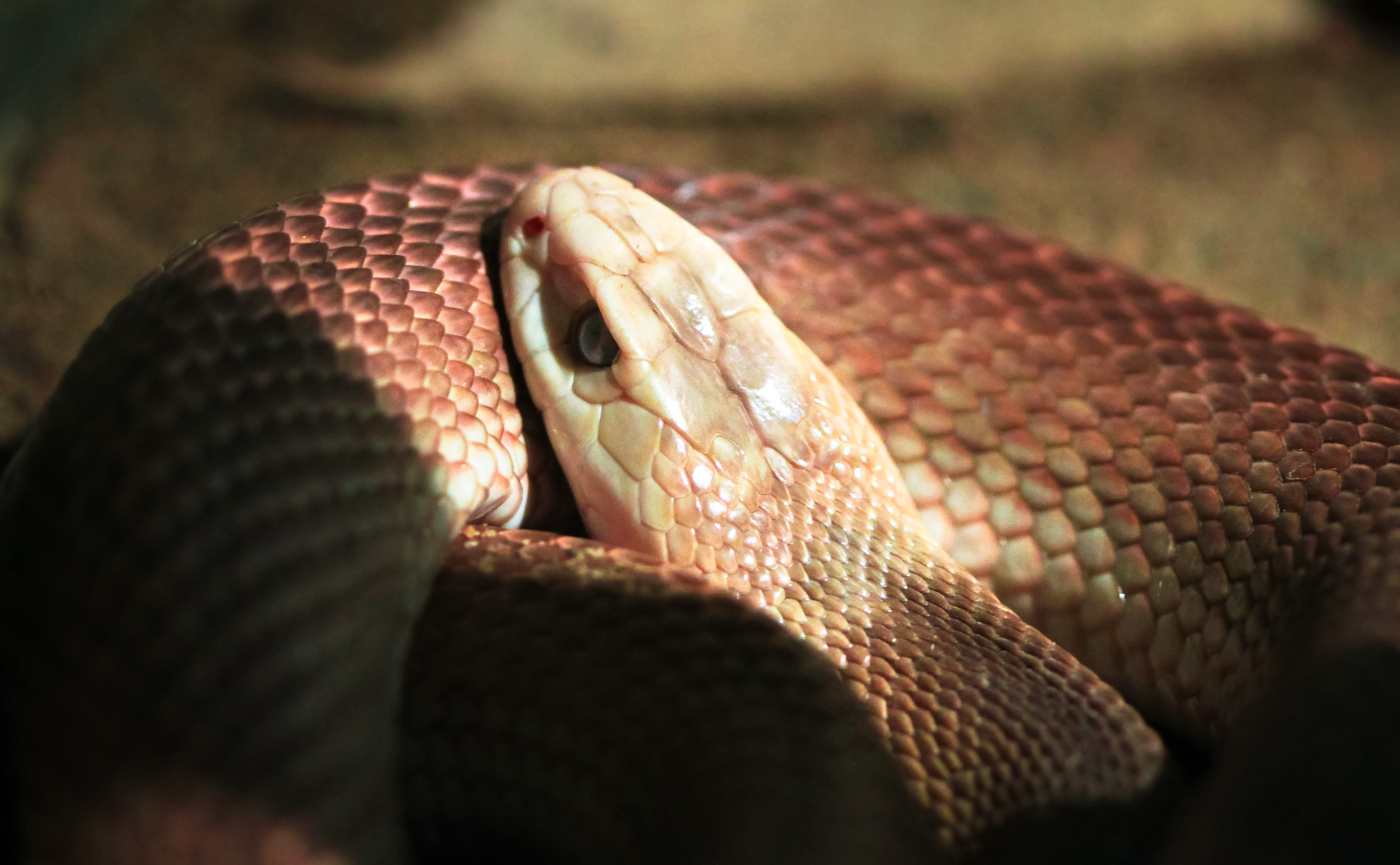
In the arid landscapes of Australia, the inland taipan reigns supreme as the world's most venomous snake. Often referred to as the "fierce snake," its venom is a potent mix of neurotoxins, hemotoxins, and myotoxins, capable of immobilizing and digesting prey with remarkable efficiency. Despite its fearsome capabilities, the inland taipan is reclusive and rarely encountered by humans, preferring the solitude of its desert habitat. The snake's muted coloration, a blend of browns and tans, allows it to blend seamlessly into its environment, a stark contrast to the vibrant displays of other poisonous creatures. This camouflage is essential for both hunting and evading predators. The inland taipan's venom is a testament to the power of evolution, a finely tuned weapon that ensures its survival in a harsh and unforgiving landscape. Its existence challenges our perceptions of beauty, reminding us that even the most unassuming creatures can possess extraordinary power.
4. The Aesthetic Assassin: Blue-Ringed Octopus
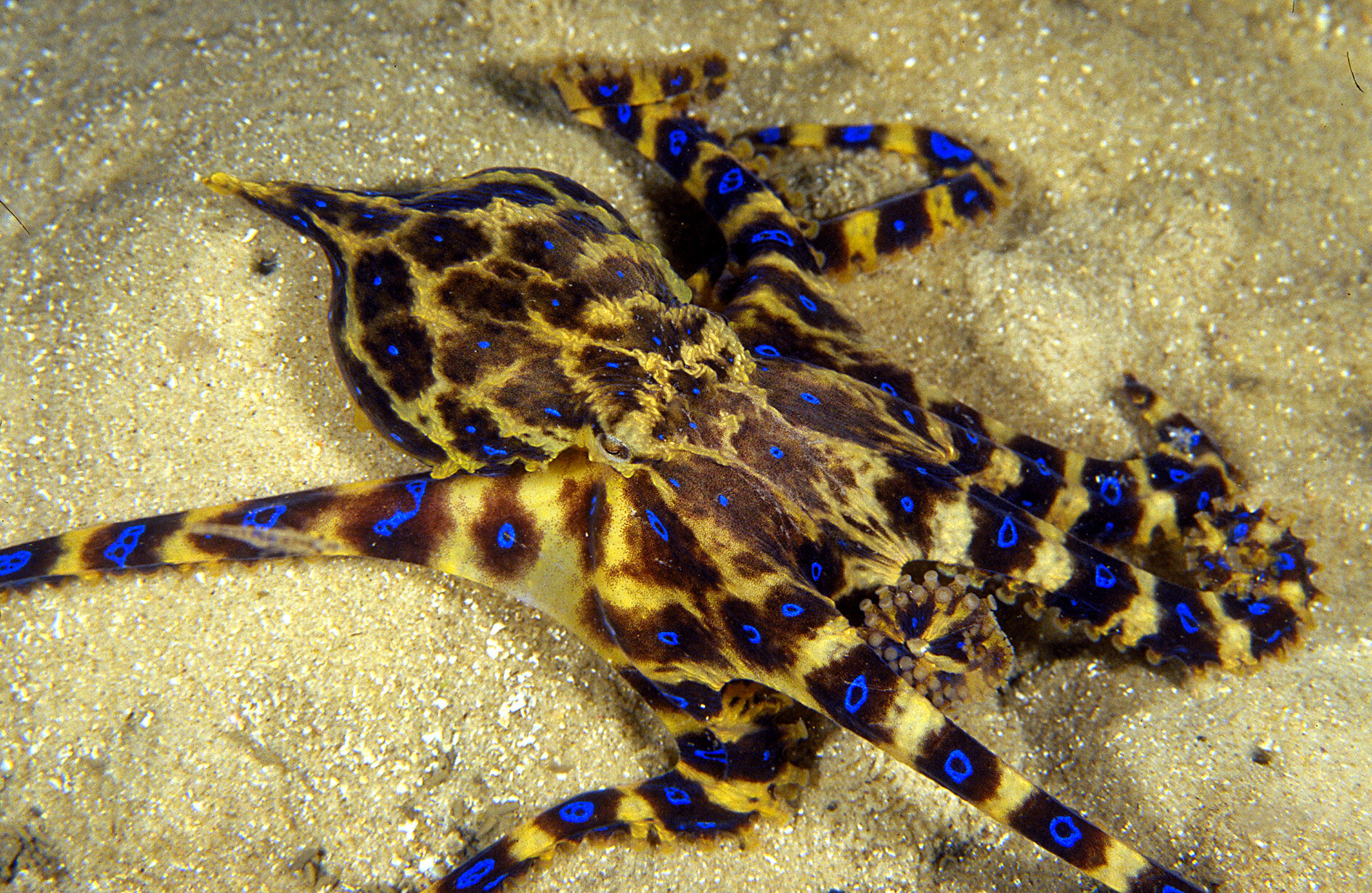
With its mesmerizing blue rings and small, delicate form, the blue-ringed octopus is a master of deception. Found in the tidal pools and coral reefs of the Pacific and Indian Oceans, this cephalopod is equipped with a venom that can cause paralysis and respiratory failure in humans. The blue-ringed octopus's beauty is both a warning and a defense mechanism, as the vibrant rings appear only when the creature feels threatened. The octopus's venom contains tetrodotoxin, a potent neurotoxin that blocks nerve signals and can be fatal in small doses. Despite its lethal capabilities, the blue-ringed octopus is a vital part of the marine ecosystem, contributing to the health of coral reefs by controlling the population of small crustaceans. Its existence highlights the complexity of marine life and the delicate balance that sustains it. The blue-ringed octopus serves as a reminder of the hidden wonders of the ocean and the need for conservation efforts to protect these fragile environments.
5. The Winged Menace: Golden Poison Frog
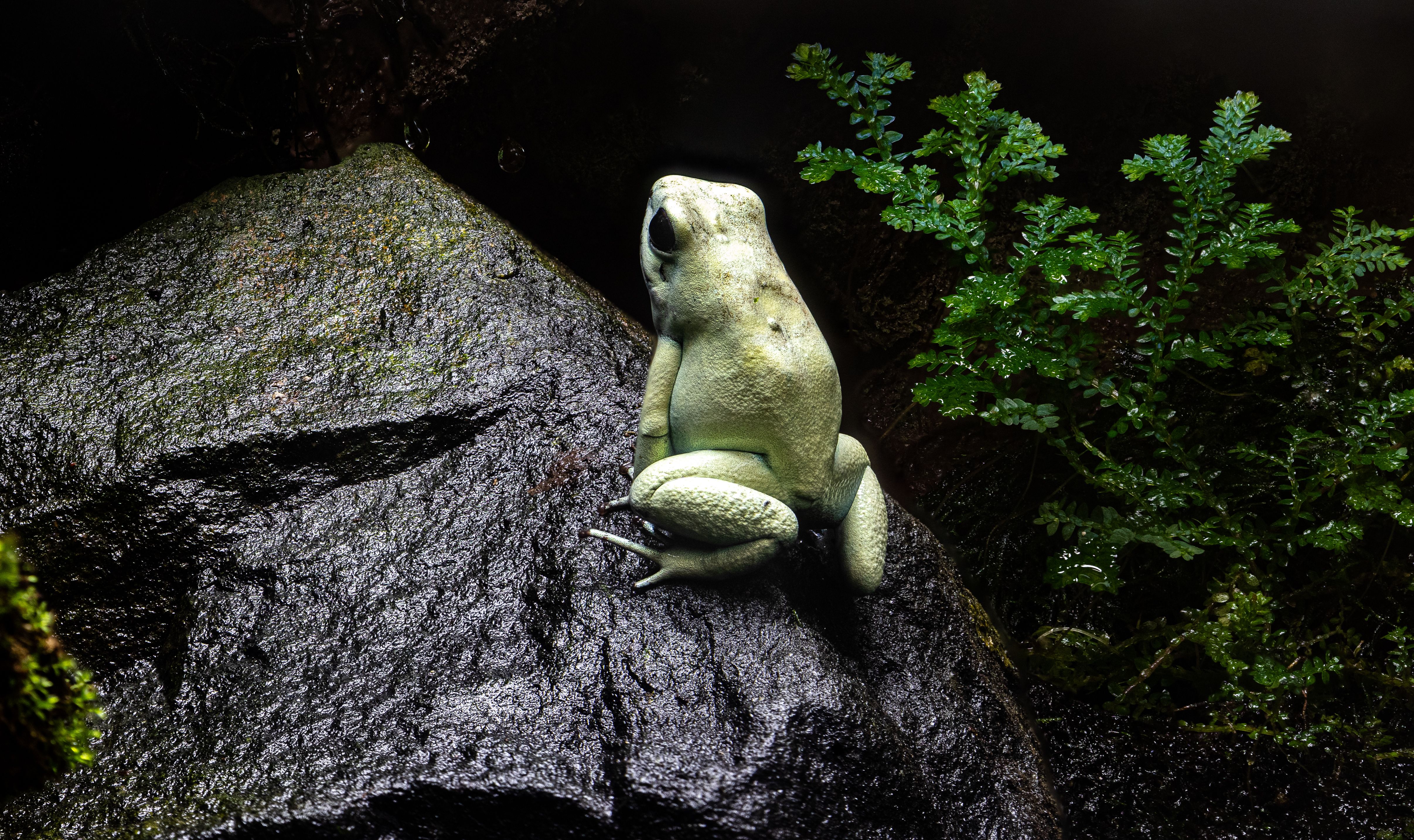
In the dense rainforests of Colombia, the golden poison frog stands out as a beacon of beauty and danger. With its bright yellow skin, this frog is one of the most toxic animals on Earth, carrying enough poison to kill several humans. The frog's toxins, known as batrachotoxins, disrupt nerve signals, leading to paralysis and death. This potent defense mechanism deters predators and ensures the frog's survival in a competitive environment. The golden poison frog's toxicity is a result of its diet, which includes insects that contain toxic alkaloids. This unique dietary adaptation highlights the intricate relationships within ecosystems and the role of chemical defenses in survival. Despite its lethal nature, the golden poison frog plays a crucial role in its habitat, controlling insect populations and contributing to the biodiversity of the rainforest. Its existence challenges our understanding of beauty and danger, urging us to appreciate the complexity of the natural world.
6. The Underwater Enigma: Stonefish
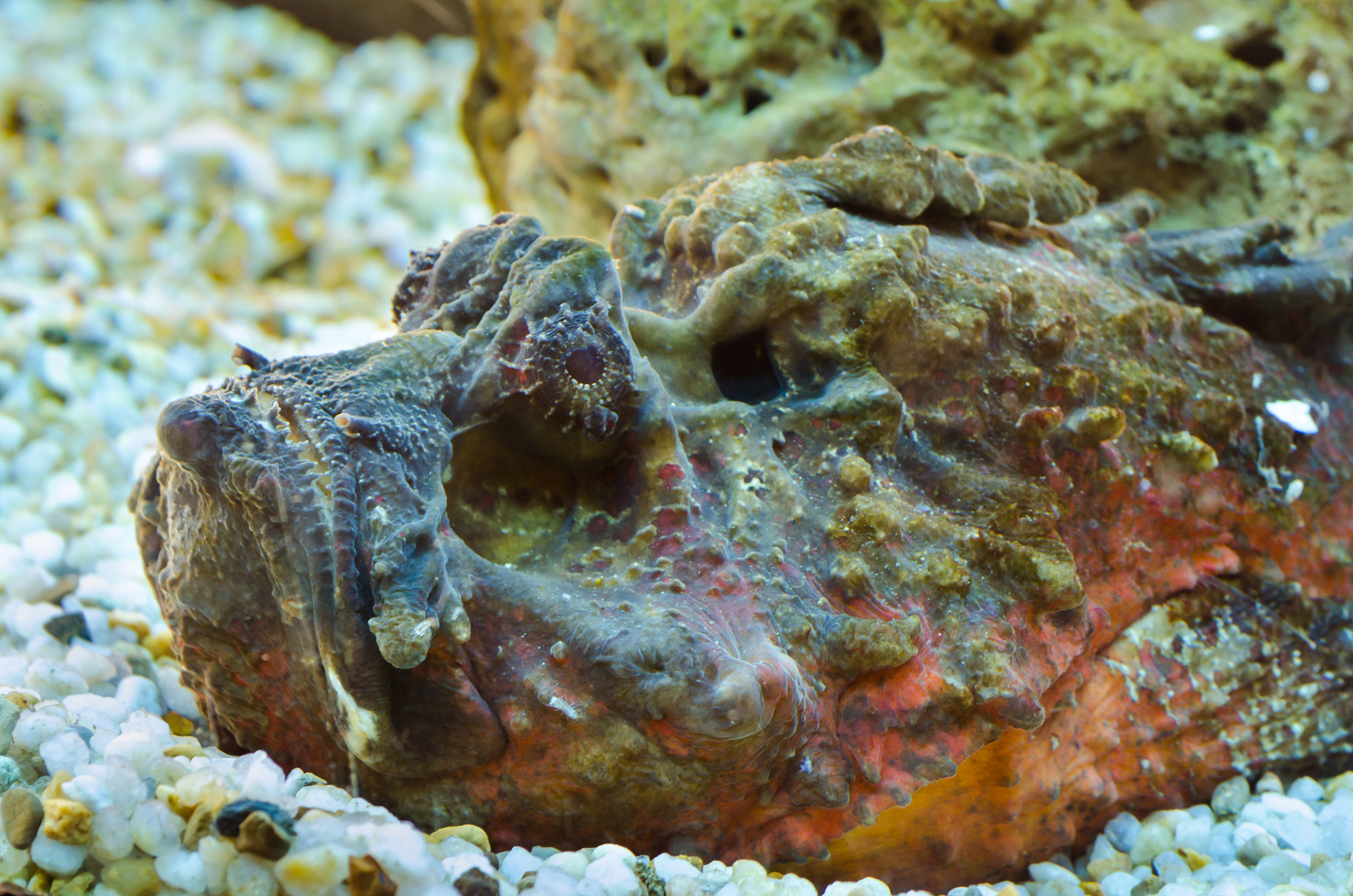
Camouflaged among the rocks and coral of the Indo-Pacific, the stonefish is a master of disguise. Its mottled appearance allows it to blend seamlessly into its surroundings, waiting patiently for unsuspecting prey. The stonefish's dorsal spines are equipped with venom glands that can deliver a painful and potentially fatal sting to those who tread too close. This venom, a mix of neurotoxins and cytotoxins, can cause excruciating pain, tissue damage, and even death. Despite its fearsome reputation, the stonefish is an essential part of the marine ecosystem, controlling the population of small fish and invertebrates. Its ability to remain hidden is a testament to the power of camouflage as a survival strategy. The stonefish's existence challenges our perceptions of beauty, reminding us that danger often lies beneath the surface. Its presence in the ocean serves as a reminder of the importance of respecting and preserving marine habitats.
7. The Sky's Silent Predator: Brazilian Wandering Spider
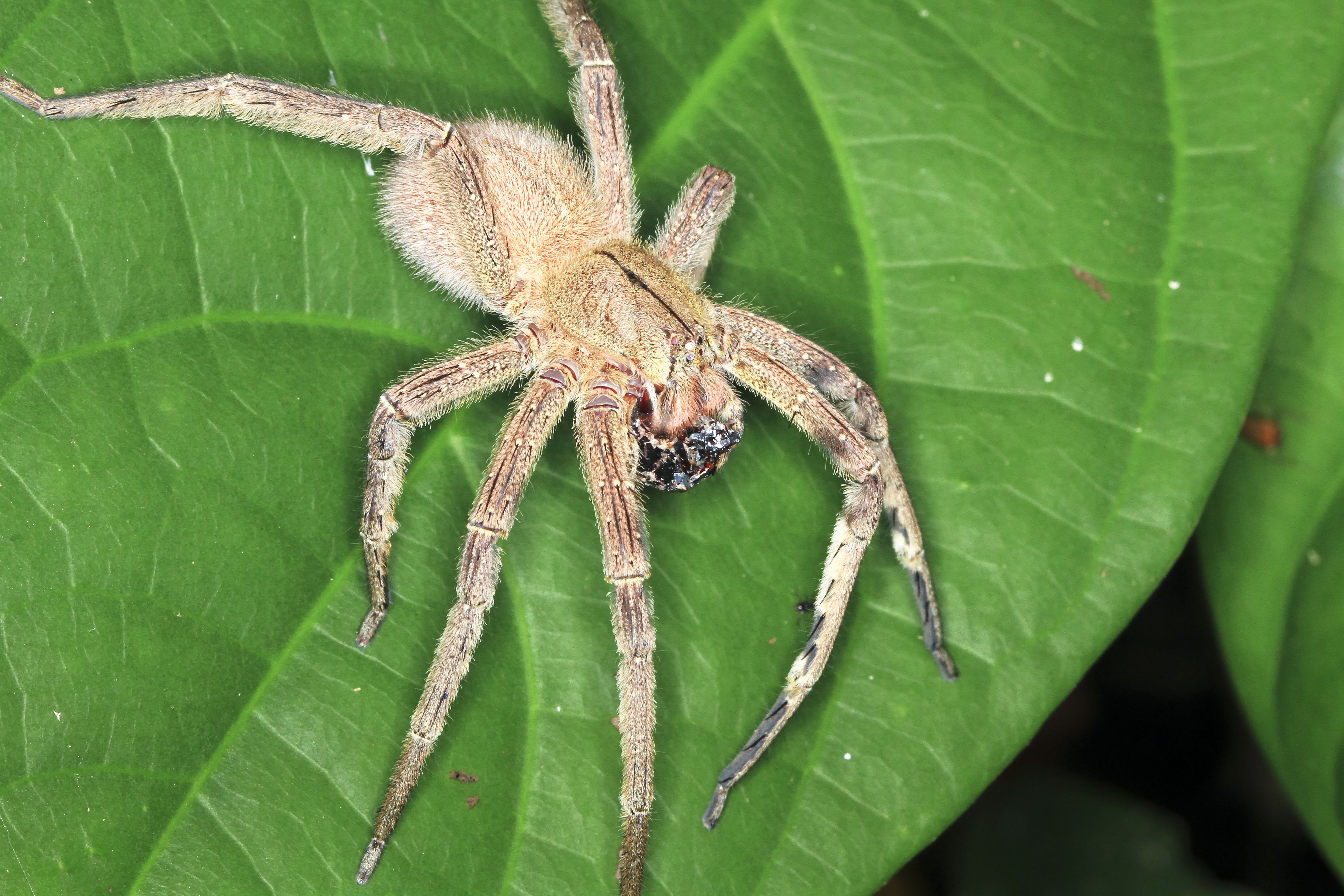
Roaming the jungles of South America, the Brazilian wandering spider is a nocturnal hunter with a potent venom. Known for its aggressive behavior and powerful bite, this spider's venom contains a complex mix of neurotoxins that can cause paralysis and death in small mammals. Despite its fearsome reputation, the Brazilian wandering spider plays a crucial role in controlling insect populations and maintaining the balance of the rainforest ecosystem. The spider's appearance, with its long legs and distinctive markings, is both captivating and intimidating. Its ability to navigate the forest floor with agility and precision makes it a formidable predator. The Brazilian wandering spider's existence highlights the complexity of the rainforest and the delicate balance that sustains it. Its presence serves as a reminder of the hidden dangers lurking in the natural world and the need for respect and caution when exploring these environments.
8. The Vibrant Lure: Cone Snail
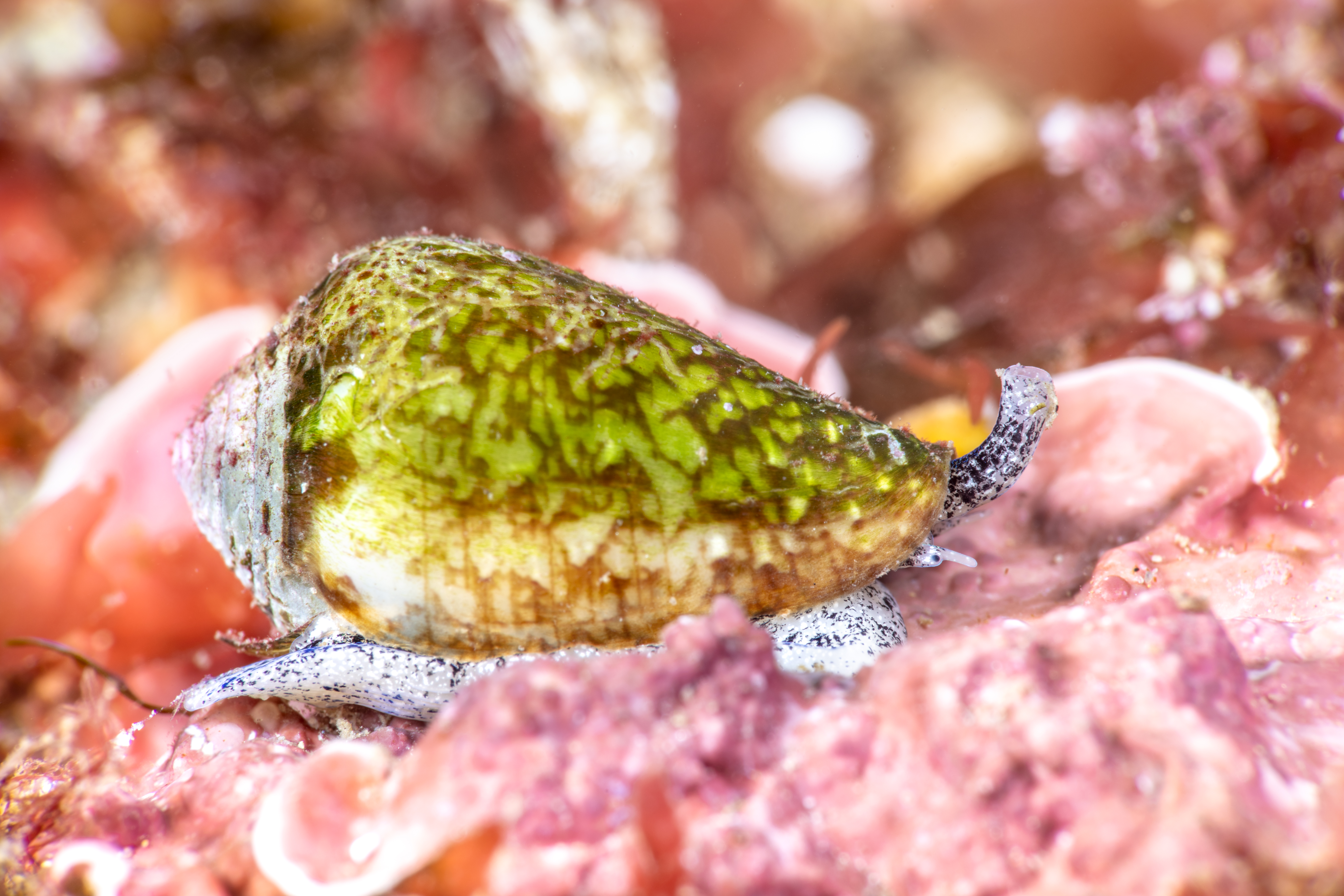
In the vibrant coral reefs of the Indo-Pacific, the cone snail is a master of deception. With its beautifully patterned shell, this marine mollusk lures unsuspecting prey into its deadly embrace. The cone snail's harpoon-like tooth delivers a potent venom that can cause paralysis and death in minutes. This venom, a mix of conotoxins, is one of the most complex and powerful in the animal kingdom, capable of targeting specific nerve channels in its prey. Despite its lethal capabilities, the cone snail plays a vital role in the marine ecosystem, controlling the population of small fish and invertebrates. Its existence highlights the complexity of marine life and the delicate balance that sustains it. The cone snail's beauty and danger serve as a reminder of the hidden wonders of the ocean and the need for conservation efforts to protect these fragile environments.
9. The Desert's Stealthy Hunter: Deathstalker Scorpion
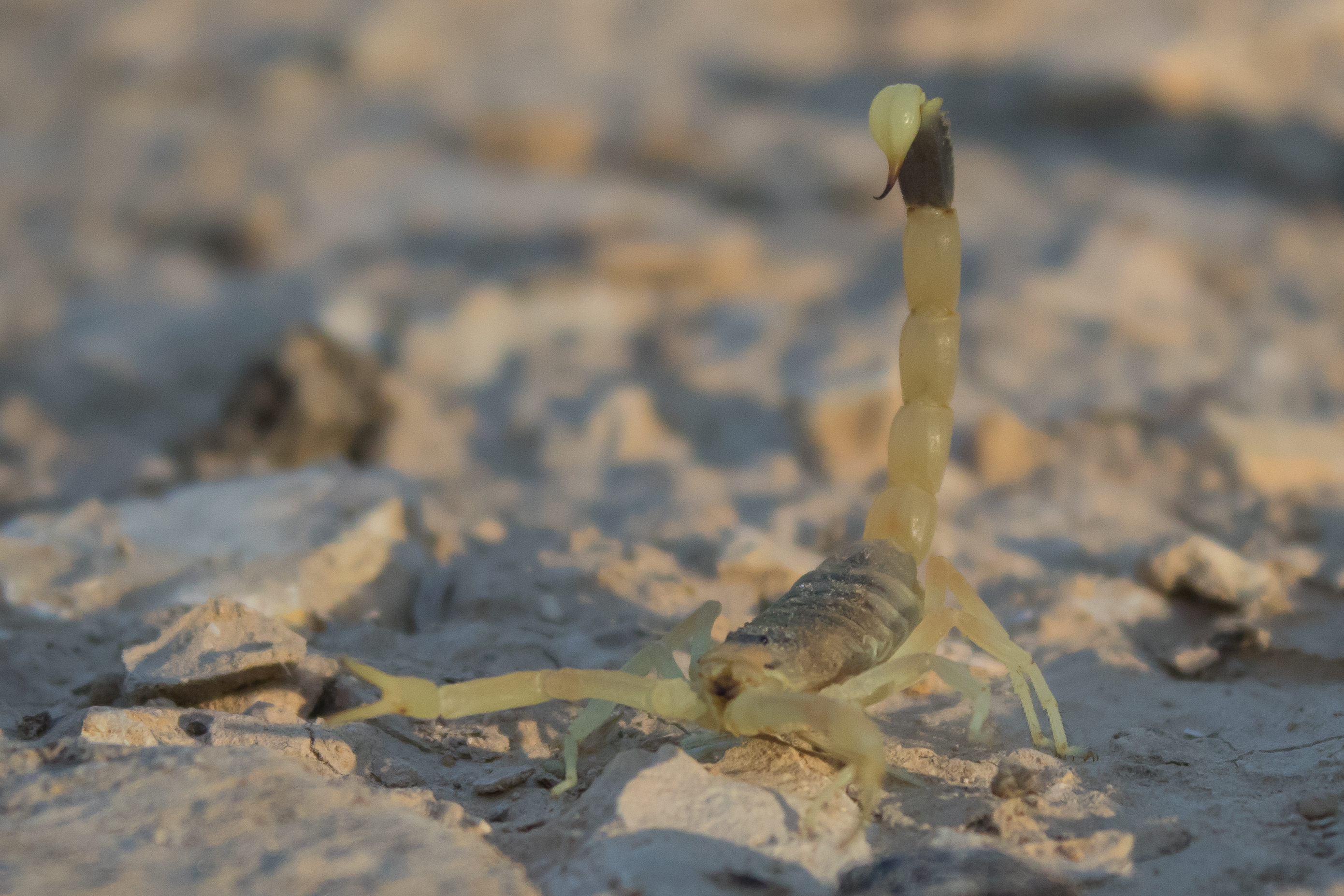
In the arid deserts of North Africa and the Middle East, the deathstalker scorpion prowls the night in search of prey. Known for its potent venom, this scorpion's sting can cause excruciating pain, paralysis, and even death in humans. Despite its fearsome reputation, the deathstalker scorpion plays a crucial role in controlling insect populations and maintaining the balance of the desert ecosystem. The scorpion's appearance, with its slender body and distinctive markings, is both captivating and intimidating. Its ability to navigate the desert landscape with agility and precision makes it a formidable predator. The deathstalker scorpion's existence highlights the complexity of the desert and the delicate balance that sustains it. Its presence serves as a reminder of the hidden dangers lurking in the natural world and the need for respect and caution when exploring these environments.
10. The Jungle's Hidden Threat: Bullet Ant
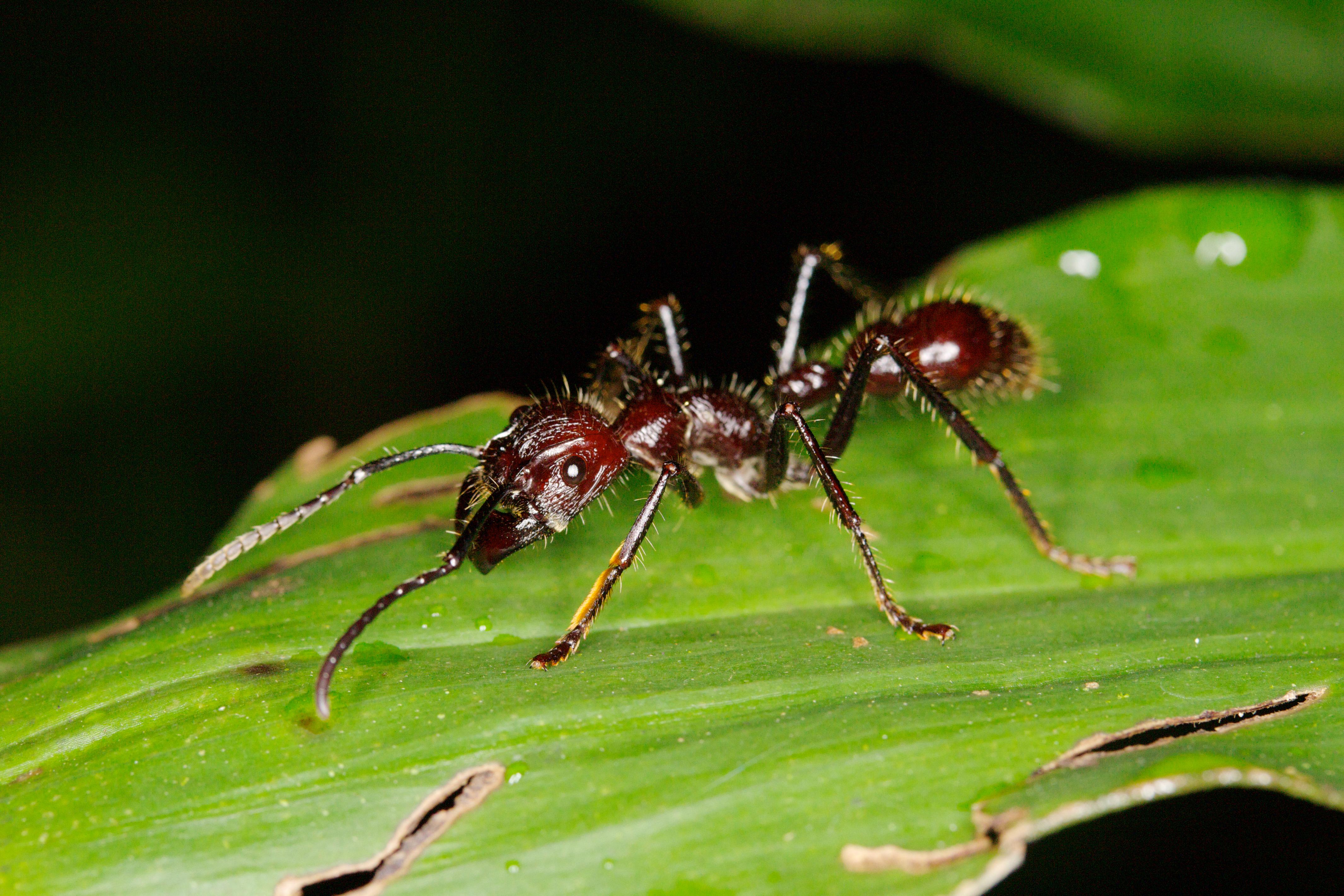
In the dense rainforests of Central and South America, the bullet ant is a formidable presence. Known for its painful sting, this ant's venom is a potent mix of neurotoxins that can cause intense pain and paralysis. Despite its fearsome reputation, the bullet ant plays a crucial role in controlling insect populations and maintaining the balance of the rainforest ecosystem. The ant's appearance, with its large size and distinctive markings, is both captivating and intimidating. Its ability to navigate the forest floor with agility and precision makes it a formidable predator. The bullet ant's existence highlights the complexity of the rainforest and the delicate balance that sustains it. Its presence serves as a reminder of the hidden dangers lurking in the natural world and the need for respect and caution when exploring these environments.
The Duality of Nature's Masterpieces
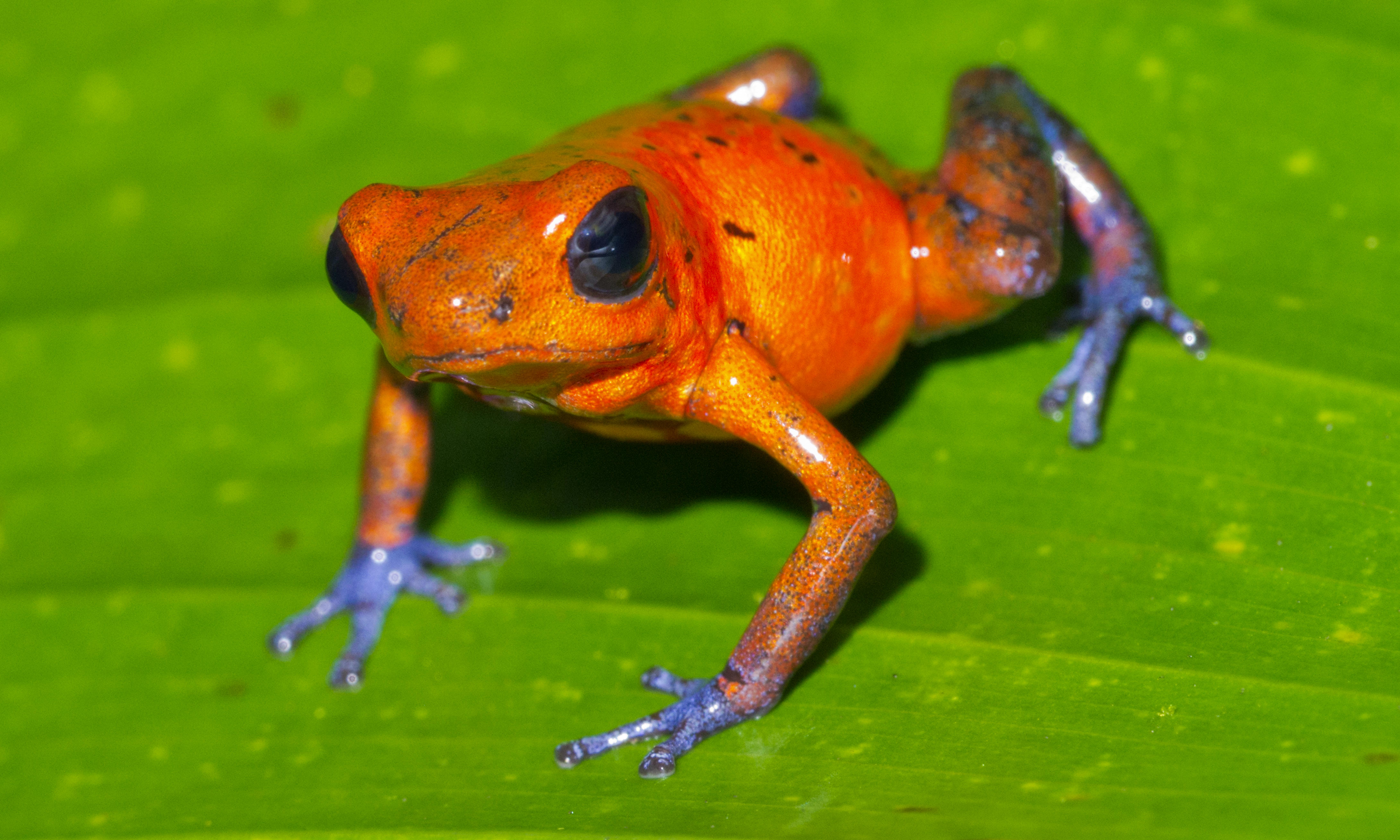
As we conclude our exploration of the world's most poisonous animals, we are left with a profound appreciation for the complexity and beauty of the natural world. These creatures, with their vibrant colors, intricate patterns, and lethal capabilities, exemplify the duality of nature, where beauty and danger coexist in a delicate balance. Their existence challenges our perceptions of aesthetics and survival, urging us to look beyond the surface and appreciate the intricate ecological roles they play. The 'faces of lethal beauty' remind us of the importance of conservation and the need to protect these fragile ecosystems. As we continue to explore and understand the natural world, we must strive to preserve the delicate balance that sustains life on Earth. These creatures, with their mesmerizing beauty and potent defenses, serve as a testament to the power and wonder of nature, a reminder of the hidden wonders that await those who venture into the wild.







